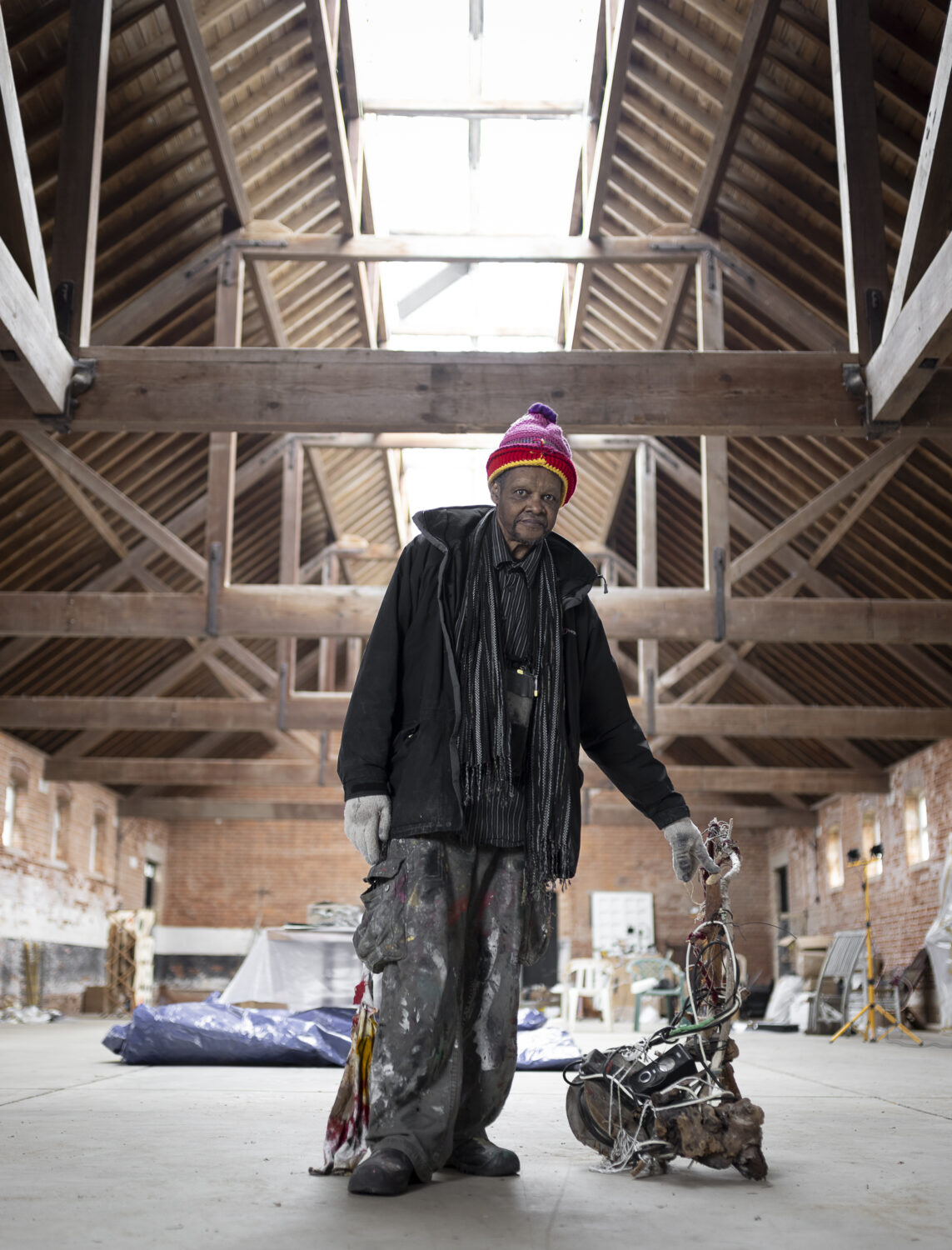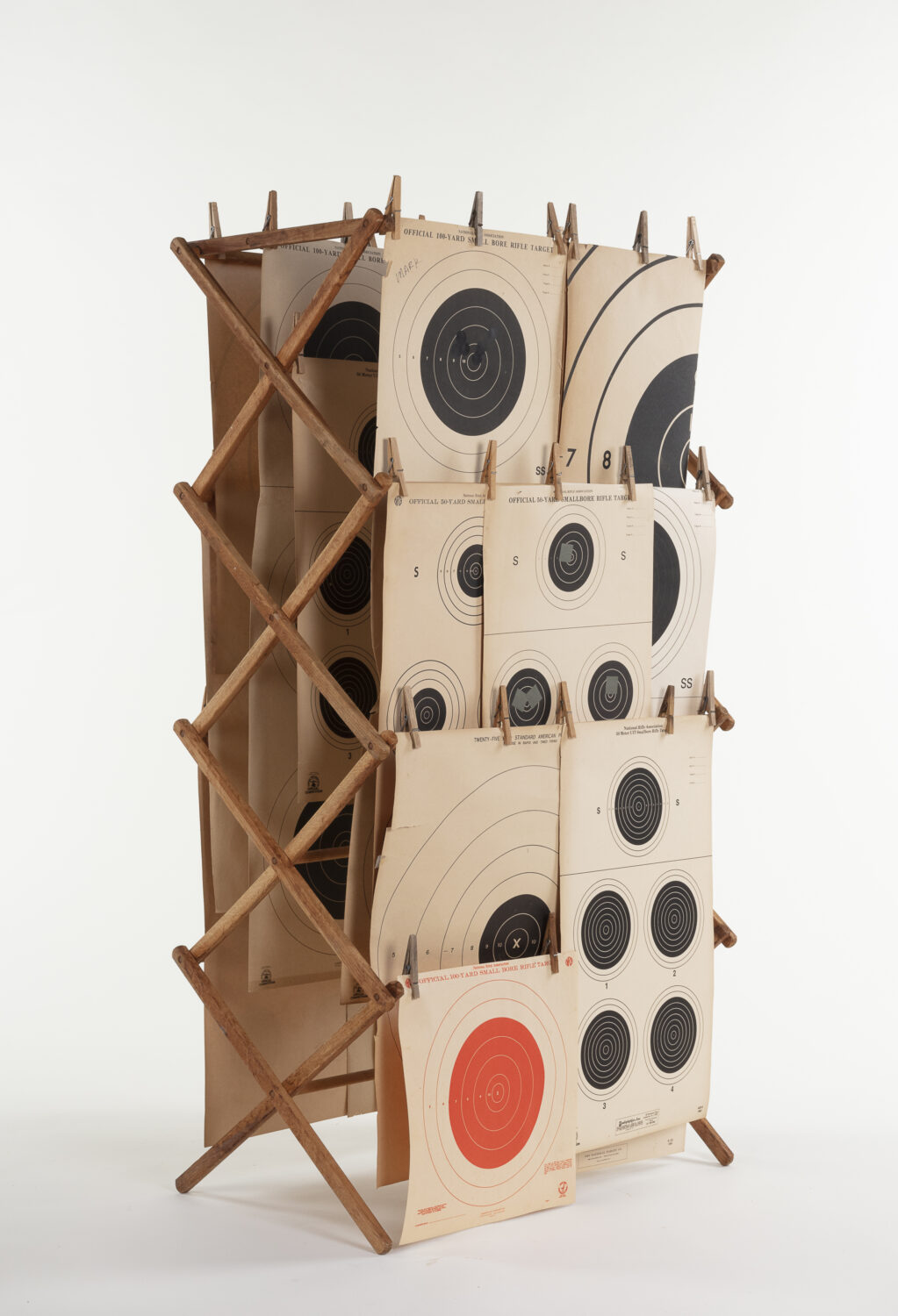Interview: Artist & Musician Lonnie Holley On Improvisational Creativity
By Something CuratedBorn in 1950 in Birmingham, Alabama, artist and musician Lonnie Holley’s interdisciplinary practice oscillates seamlessly between sculpture, painting, photography, filmmaking, performance and sound. After a turbulent youth, Holley started making sand sculptures in his late 20’s, and in time began working with found objects and painting. His found mediums are imbued with cultural and artistic metaphor, combined into sculptures that commemorate and give narrative to places, people and events. References to the artist’s own childhood in the pre-Civil-Rights-era South are made pervasive through his process of material regeneration. Holley made his debut as a recording artist in 2012, at 62 years old, going onto collaborate with the likes of Bon Iver and the Dirty Projectors, among others. On 14 May 2022, Artangel and Edel Assanti will present a special live performance with Holley at the new London arts venue Stone Nest on Shaftesbury Avenue. The performance marks the opening of the artist and musician’s first exhibition with Edel Assanti and the launch of his new Artangel commission. To learn more about the anticipated presentation, Something Curated spoke with Holley.

Something Curated: Can you give us some insight into your background and journey to art-making?
Lonnie Holley: I’ve always made things. For as long as I can remember, I’ve put things together and taken things apart and collected things. When my sister lost her young son and daughter in a house fire, she couldn’t afford tombstones to properly bury them. It was really upsetting to her. I wanted to ease her mind so I carved tombstones for the children. It lifted her spirits and it lifted mine. I just never stopped making things after that.
SC: Your practice embraces sculpture, painting, photography, filmmaking, performance and sound — how would you describe the approach or conceptual thread that tethers these diverse outputs?
LH: I don’t really think there is a difference, for me, between all of those things. If I’m making a sculpture or painting something or singing or taking a picture, that idea is coming out of the same brain. I’ve always said my art and my music are like Siamese twins to me. They are the same thing. A person who isn’t me might come to them from different places but they still come from the same place to me.
SC: What is the thinking behind the selection of works included in your upcoming exhibition, The Growth of Communication, at Edel Assanti?
LH: The show was originally supposed to happen in early 2020. I was over in the UK for the opening of We Will Walk at Turner Contemporary, played a show in London, and spent some time in Bristol, which I loved. The whole time I was there I was collecting materials and objects and ideas and making art. We left all that stuff in London and I sent a lot of other stuff over from the United States. Because of the pandemic, the show kept getting postponed. A few months ago I came over to work on a project with Artangel and to sort through all of the art and material that I sent and that had been made. It sort of blew my mind. So much of what I’d made seems to have been foretelling what would happen the next two years. I felt like I was reopening Pandora’s Box. And the materials I’d gathered that hadn’t quite become pieces yet were exactly the materials I needed in 2022.

SC: Could you expand on your interest in working with discarded objects?
LH: Objects that have been discarded have history and a power that I think hasn’t been fully used. If I can take something you throw away because you think it’s over and done with, and then make something that helps people understand who and what we are as humans, I’ve helped someone understand something and kept something from going into a landfill. And I usually learn a valuable lesson myself.
SC: Can you tell us about your new Artangel film commission; how did the project come about?
LH: When I was in the UK in early 2020, the time I mentioned earlier, I had a show at Cafe OTO. After the show, Matt Arnett (my friend and manager) and I met Michael Morris from Artangel. He and Matt were talking about a project they were working on at Orford Ness. It sounded like the kind of place that I would love. A number of years ago we were in Porto, Portugal and met Jem Finer. He was talking about a project he’d done and we realized that it was also a project with Artangel. The pandemic made it hard to get back over to the UK, so it kept getting postponed and changed. The film wasn’t the original idea but I think things happened right on time. We spent three days out at Orford Ness filming. I performed new songs on a lot of different locations on the island. If you want to see what I sound like when my body is frozen, watch the film. It was so cold and windy out there. But it was an experience I won’t forget. My grandfather was in WWI and my father was in WWII. Being out there I could feel the presence of all the people who served in those wars.

SC: And what are you currently reading?
LH: I didn’t really learn to read very well until I was an adult. I had to teach myself. When I should have been learning to read I was locked up in a horrible place in Alabama called the Alabama Industrial School for Negro Children. They said I was out past curfew. I didn’t even know what a curfew was. I was in that horrible place for almost four years and nobody knew where I was. Later this year there is a podcast coming out about that place. I’ll be glad when more people know about how we were treated. But because I came to reading late, I literally try to read everything I can. When we drive, I even read every street sign.
Feature image: Lonnie Holley performing on Orford Ness, March 2022. Still from The Edge of What (2022). Courtesy of Artangel